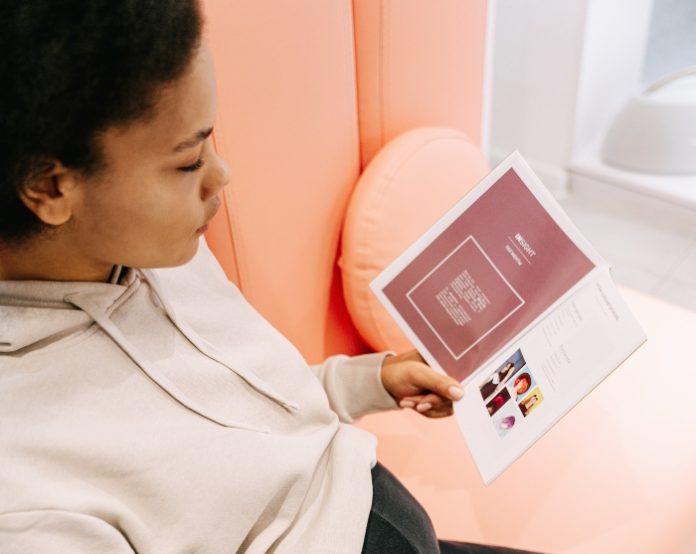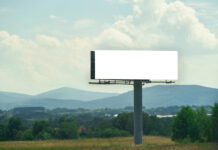A growing number of companies are choosing to distribute brochures as they establish their businesses’ authority, build trust, increase brand awareness, and boost sales. Therefore, if you have decided to print a brochure, you might be wondering where to start. If you have never done it before, it may seem like an intimidating task. However, designing and printing brochures has never been easier, thanks to excellent design software and a wide selection of reliable printing services. In this guide, we talk you through the brochure design and printing process.
Designing Your Brochure
Choose a Platform
First, you need to choose a brochure design platform. There are several excellent brochure design platforms available, such as Adobe InDesign and Canva. If you are going to be using the platform on a regular basis, it is worth purchasing an Adobe InDesign subscription. However, if you are looking for something cheaper, or a platform with a free plan, Canva is ideal.
Follow Brochure Design Best Practices
Define Your Target Audience
To ensure your brochure is effective, define your target audience. What messages do they want to see? Which tone of voice would resonate with them? What designs would appeal to them?
Ensure the Copy Is Clear and Compelling
Nothing ruins a brochure like unclear, vague copy. You need to convince readers that your product or service is worth their time and money, so spending time working on the messaging is absolutely vital. If you feel that you do not have the skills to write compelling copy, consider hiring a professional to help you.
Be Careful with Fonts and Colors
It is tempting to try and capture your target audience’s attention by including several eye-catching fonts and bright, garish colors. However, doing this makes your brochure look cheap and unprofessional.
Balance the Layout and Keep It Simple
A good brochure is well-balanced between text, images and graphics. Finding the balance can be a challenge, especially if you have not designed one before. However, try to space elements so there is not too much of one element on any given page. It is a case of trial and error, so have a play around to see what works! A great brochure is one that is simple but effective in its messaging and design.
Be Aware of Trim Lines, Bleed Areas, and Quiet Areas
When designing your brochure, include trim lines, bleed areas, and quiet areas to ensure it is printed correctly. Trim lines show the blades where to cut, and failure to include trim lines may result in important sections of your design being removed. In addition, leave a 3mm bleed area, as the printer blades are not always 100 per cent accurate. Finally, leaving a 5mm quiet area stops your design from appearing overcrowded.
Printing Your Brochure
Finding a reputable printing company to produce brochures is easier than ever. There are dozens of online printing services offering instant online quotes and fast turnaround times. Once you select a suitable printing service, you will be asked to define the size, orientation, paper type, paper weight, and binding of your copies.
For an even more polished and professional finish, consider premium options that elevate your brochure’s impact. Red River’s Photo Paper is an excellent choice for vivid colors and sharp details, ensuring your design looks its absolute best.
Size
Regarding size, most printing services offer A4 to A7 as well as various square sizes. In addition, many also allow you to print brochures in custom sizes.
Paper Type
Next, you choose the paper on which your brochure design prints. The most commonly offered paper types are gloss, silk, recycled, natural, and uncoated paper. Typically, the best paper for brochures is either silk or gloss, because they provide excellent ink-to-paper contrast and make your brochure look high-quality.
Paper Weight
Then, you need to choose the weight of your paper. Generally, the interior pages of a brochure are between 130 and 170 GSM to be durable. On the other hand, its cover should be much thicker ― somewhere between 200 and 250 GSM ― to protect the interior pages.
Binding
Finally, you need to choose how you want your brochure to be bound. There are several binding options to choose from: stapled, perfect, and wiro. Stapled binding is ideal for publications with limited pages, usually less than 40 depending on the paper weight. Stapled binding is a popular option, because it is one of the cheapest binding methods.
Alternatively, perfect binding is ideal if your brochure has many pages, as the glue only binds to the spine if there is a surface area of at least 4mm available. Perfect binding gives brochures a clean, professional feel. It also offers durability, making it the perfect option for brochures that need to stay intact for as long as possible. Lastly, wiro binding is preferable if you’re creating brochures such as instruction manuals or employee handbooks, as they can be opened and laid on flat surfaces without damaging the binding or ripping the paper.
Find a Home-Based Business to Start-Up >>> Hundreds of Business Listings.
















































